Treasure hunting for carbon stars, the rubies of the night sky.
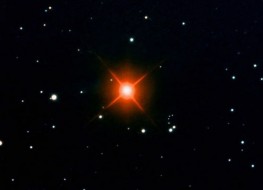
Joseph Brimacombe
Color can be tough to come by in the deep sky, especially if you own a small telescope. Planets serve up a medley of subtle hues, as do a few planetary and bright nebulae. Stars show tints of blue, yellow, and orange, but there's nothing quite like the color red. Show a yellow star to someone at a star party and you might hear a polite "that's nice."
But point the scope at a smoldering ruby like T Lyrae? Watch their faces light up. We react with instinctive pleasure at seeing radiant reds, and there's no better place to get our fill than carbon stars.
Most carbon stars are red giants, one of the reasons for their ruddy hue. Much of the star's red complexion comes from carbon in its atmosphere. Stars generate light and heat by nuclear reactions, converting hydrogen into helium in their cores. As a Sun-like star ages, its core compresses and heats up until it can cook helium nuclei into carbon. Convective currents dredge carbon from the core and deliver it to the star's outer layers where it forms a fine soot that scatters away blue and green light. Only oranges and reds penetrate the dusty barrier to reach our eyes.
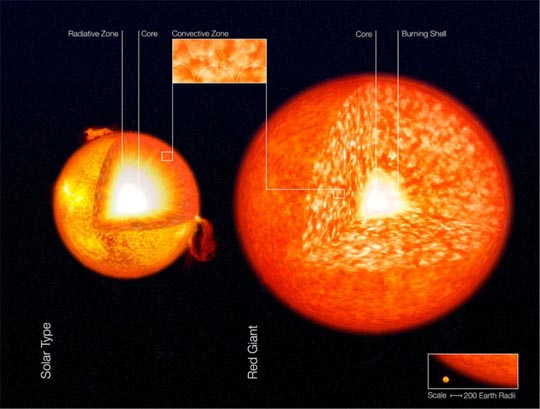
European Southern Observatory
Sunsets are red for a similar reason. At the horizon, sunlight takes a longer path through the denser, dustier air of the lower atmosphere compared to midday. Blues and greens are scattered away, leaving only the warmer colors.
All carbon stars are variable stars — the reason for their letter designations — and vary in brightness with periods that range from a couple months to more than a year. Perception of star color has much to do with a star's brightness. One star might be touted as redder than another, but if it's on the bright end of its cycle, shining at 6th or 7th magnitude, the color will look less saturated than it does when the star hovers near minimum. R Leporis, better known as "Hind's Crimson Star," is an intensely red ember when in the magnitude 9 or 10 range. Presently around magnitude 6.5, it looks washed out in comparison. Scope size also plays into carbon star color, making each person's experience different.
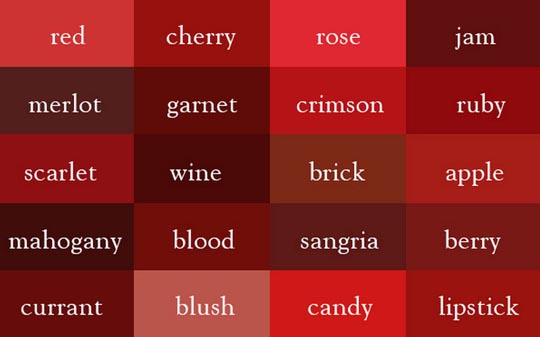
Ingrid Sundberg
Another peculiarity of observing carbon stars has to do with the eye's perception of red-hued objects in low light; this is called the Purkinje Effect. U Cygni, which glimmers at 10th magnitude this week, looked dim and nearly colorless when I first glanced at it. But the longer I stared, the redder and brighter it became. Now it's on my favorites list, along with S Cephei (cherry red!) and R Leporis.
Because color perception is subjective, astronomers don't use "red" or "blue" to describe star tints. Instead, they measures a star's magnitude or brightness through a B (blue) filter and a V (visual) filter (similar to what the human eye sees). The difference between the two magnitudes is called the B–V color index. Extremely hot stars pour out more blue light and have B–V values that are generally less than zero; cooler red stars have positive indices. Blue-white Spica in Virgo has a B–V of –0.3, the Sun +0.65 (slightly yellow), and the carbon star R Leporis a whopping +5.7 (very red). Generally, the larger the number, the redder the star.
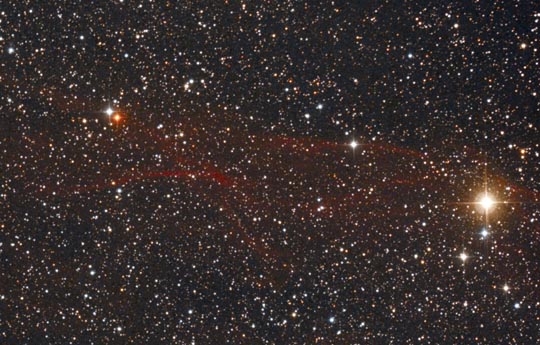
Greg Parker
Sometimes a carbon star will share the field with a star of a very different color for a striking contrast. British astrophotographer and red-star aficionado Greg Parker is smitten by U Cygni's pairing with a nearby white star against the backdrop of a delicate red nebula.
Carbon stars are scattered across the sky, guaranteeing plenty of happy viewing no matter the season. I've selected a dozen for your perusal. Every one is up during evening hours this month except V Hydrae, which I've included because it's billed as one of the reddest stars in the sky. Don't miss it.
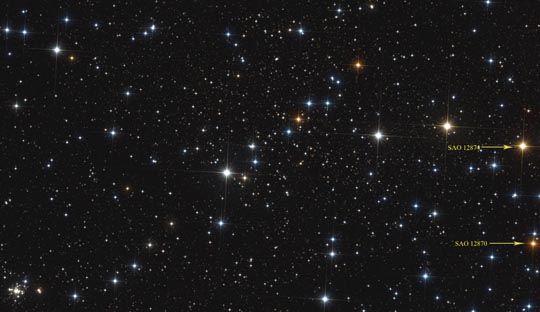
Greg Parker
Current magnitudes are shown in parentheses and estimated by myself or gleaned from the website of the American Association of Variable Star Observers (AAVSO). The AAVSO is a great place to print out finder charts for each of these gems. Click here and key in the star's name in the Pick a Star box. Remember to use just the first three letters of the name as in U Cyg or R Lep (there are exceptions as in V Hya and Y CVn - click here for all constellation designations). You can also check recent brightness estimates by clicking Check Recent Observations. Every star listed is plotted on Wil Tirion's Sky Atlas 2000.0 as well.
Watch out. You might get hooked on these rubies. If you do and crave more, the Astronomical League offers a carbon star observing program featuring a list of 100 carbon stars.
| Name | Location | B–V | Magnitude range | Period (days) | Notes |
|---|---|---|---|---|---|
| T Lyrae | 18h 32m +36° 59′ |
+3.7 | 7.5-9.2 (8.9) |
Irreg. | Very deep red! |
| UX Draconis | 19h 21m +76° 33′ |
+3.5 | 5.9-7.1 (6.7) |
175 | Fiery orange-red |
| U Cygni | 20h 19m +47° 53′ |
+3.7 | 5.9-12.1 (9.8) |
463 | Dim, rich red |
| S Cephei | 21h 35m +78° 37′ |
+4.8 | 7.4-12.9 (9.8) |
487 | Deep cherry red! |
| TX Piscium | 23h 46m +03° 29′ |
+2.5 | 4.8-5.2 (5.3) |
Irreg. | Yellow-red, bright |
| VX Andromedae | 0h 20m +44° 42′ |
+1.6 | 7.5-9.7 (8.6) |
375 | Medium red |
| R Leporis | 4h 59m –14° 58′ |
+5.7 | 5.5-11.7 (6.3) |
445 | Red, bright |
| BL Orionis | 6h 25m +14° 43′ |
+2.4 | 5.9-6.6 (6.6) |
154 | Fiery orange-red |
| UU Aurigae | 6h 36m +38° 26′ |
+2.6 | 5.1-6.6 (5.5) |
234 | Fiery, bright! |
| T Cancri | 8h 56m +19° 51′ |
+5.3 | 7.6-10.5 (9.8) |
482 | Deep orange-red |
| V Hydrae | 10h 51m –21° 15′ |
+4.5 | 6.0-12.3 (9.5) |
531 | Deep copper-red |
| Y Canum Venaticorum | 12h 45m +45° 26′ |
+2.9 | 4.9-5.9 (5.5) |
268 | Yellow-orange |
Searching for celestial treasure? Let our Pocket Sky Atlas be your map!
 9
9
Comments
Anthony Barreiro
December 5, 2014 at 5:08 pm
Thanks Bob for the clear explanation of the physics of carbon stars and for the handy observing list! I love looking at carbon stars and showing them to people during public outreach events.
You must be logged in to post a comment.
Brad-Vietje
December 8, 2014 at 1:34 pm
Note to readers: if you follow the link to the AAVSO site and use the "Pick a Star" feature to get finder charts, etc..., you want to use the abbreviated star name. Thus, not "U Cygni" which only gets you an error message and a feeling of frustration, but "U Cyg", which takes you where you want to go. Doesn't seem like a huge programming issue to put in alternate names for 88 constellations, or spit out a message like "Did you mean U Gyg ?", but, alas, that's not how it works :~/
You must be logged in to post a comment.
Bob KingPost Author
December 16, 2014 at 11:12 pm
Thank you very much Brad-Vietje for pointing out this important detail! I will add it to the article so others may avoid that frustration.
You must be logged in to post a comment.
Tom Hoffelder
December 10, 2014 at 11:54 am
I've been a big fan of carbons for 30 years, ever since accidentally "discovering" - and being shocked by the color of - VX And. After using Burnham's to figure out what I had found, I used the three volumes to create my list of Carbon Stars.
T Lyr is my favorite; Y CVn is on my list, but looking at it once was enough, since as noted above it appears to be less than orange, never mind red. And that brings me to my question. I understand any star looking redder when dimmer and the B-V not being an exact indication, but BL Ori, UU Aur and Y CVn have both similar mags and B-V's, but the descriptions are fiery orange-red, fiery and yellow-orange (for the highest B-V!), which seem far from similar.
You must be logged in to post a comment.
Tom Hoffelder
December 10, 2014 at 11:56 am
I'm not questioning the descriptions; I agree with them. I'm questioning why the colors are so different when it doesn't seem like they should be.
You must be logged in to post a comment.
Bob KingPost Author
December 16, 2014 at 11:11 pm
rocksnstars,
Great point. It's unclear to me why these stars with similar magnitudes and B-Vs. There is certainly a subjective aspect to consider but it may also have to do with different types of carbon stars. Not all are the same.
You must be logged in to post a comment.
Jamie-Dillon
December 14, 2014 at 12:21 am
Good list, including several I haven't yet seen. You don't want to leave out Herschel's Garnet Star, mu Cep! Also beautiful are c Pup (in the middle of ngc 2451, splashy open cluster) and V Aql. Thanks.
You must be logged in to post a comment.
Bob KingPost Author
December 16, 2014 at 11:07 pm
Hi Jamie-Dillon,
It was hard to draw the line, but I tried to pick those that were most striking visually and the Garnet Star, while lovely, lacks the intensity of many of the others on the list.
You must be logged in to post a comment.
Bob KingPost Author
February 15, 2015 at 10:07 am
Hi Jamie-Dillon,
While Mu Cep is quite red, it's not on the list because it's not a carbon star.
You must be logged in to post a comment.
You must be logged in to post a comment.